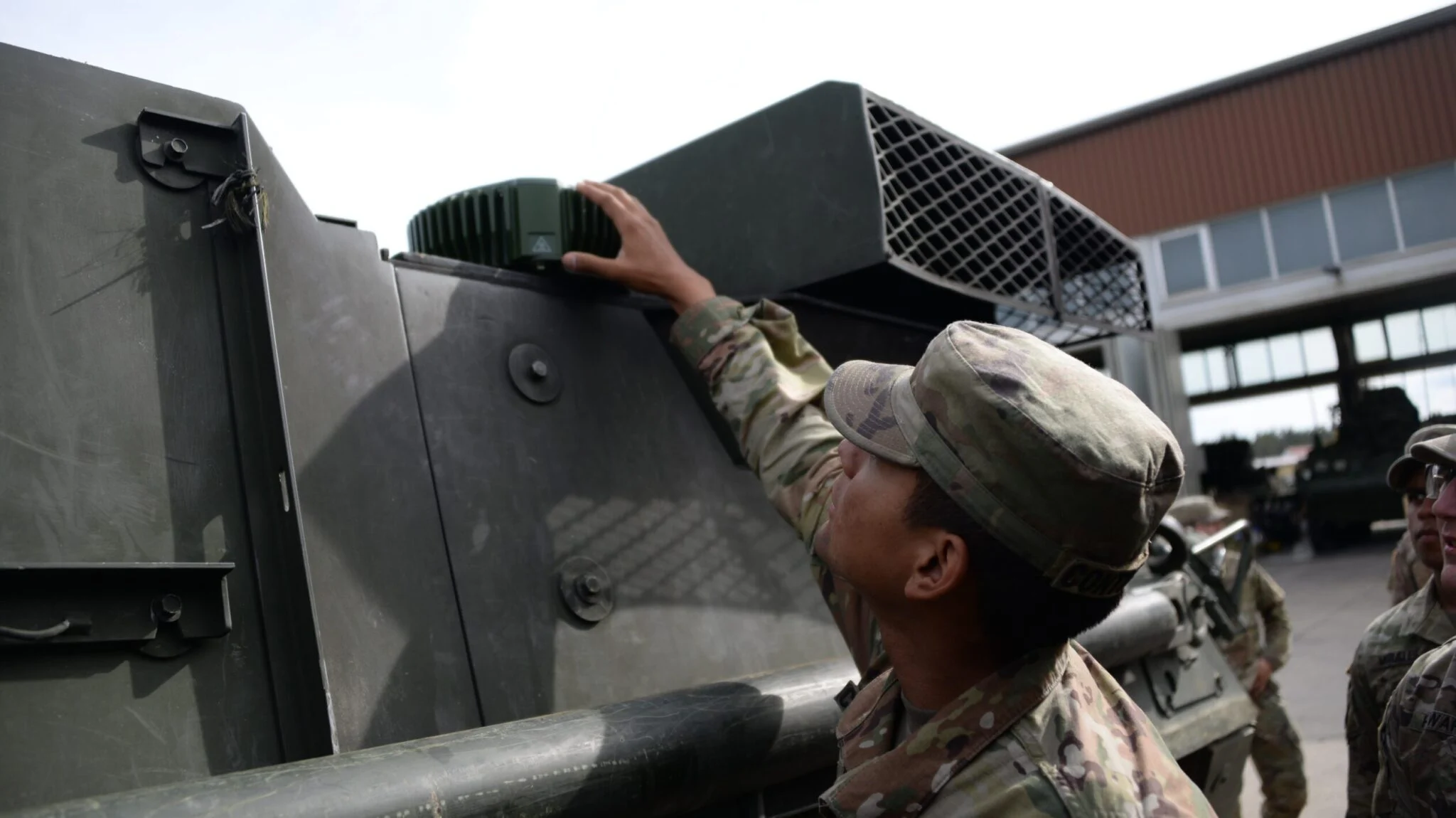Con los servicios de abastecimiento y mantenimiento de combate de EE. UU. cada vez más preocupados por la posibilidad de que el GPS falle o sea hackeado durante el combate, la industria ha buscado formas de capturar el creciente mercado de lo que se conoce como posicionamiento, navegación y temporización asegurados, o APNT, por sus siglas en inglés. Y aunque gran parte de la atención se ha centrado en armas de alto perfil como el tanque M1 Abrams, General Dynamics Mission Systems cree que puede ganar si apunta a las otras flotas de abastecimiento y mantenimiento tácticas.
WASHINGTON — With the US military services increasingly concerned about that GPS could be jammed or spoofed during combat, industry has been looking for ways to capture the growing market for what is known as assured positioning, navigation, and timing, or APNT. And while much of the focus has been on high-profile weapons like the M1 Abrams tank, General Dynamics Mission Systems thinks it can win out by targeting the service’s other tactical fleets.
At the core of the company’s strategy is finding a way to supplement the Army’s existing Mounted APNT System (MAPS) program. MAPS is an initiative that includes a Generation I capability produced by GPS Source, a subsidiary of General Dynamics, as well as a Gen II effort with Collins Aerospace to replace legacy Defense Advanced GPS Receiver (DAGR) GPS receivers and antennas in “a subset” of the service’s ground vehicles, the Pentagon’s chief weapons tester explained in its fiscal 2022 report.
Aaron Mebust, the vice president and director of GPS Source at GDMS, estimated the Army’s MAPS Gen I and Gen II systems will eventually be fielded to 20,000 vehicles (like Abrams, Strykers, Bradleys and some Joint Light Tactical Vehicles), leaving approximately 150,000 tactical vehicles without the added capability.
“There are no fuel haulers in the program of record. There are no ammunition vehicles. There are no ambulances [and] command and control nodes aren’t included,” Mebust said during a March 24 interview. “If you look at not only the entire kill chain … the support missions that are required to keep the army moving, but none of those are also covered under the current program of record.
“The Abrams doesn’t do very well without ammunition [and the] Bradley does not do very well without fuel. So how does a fueler meet up with a Bradley in a contested environment if it doesn’t have GPS [and] it can’t calculate a route?” he added.
Although the Army currently does not have a requirement to provide those additional vehicles with APNT systems, General Dynamics has built out three potential packages and showed them in action to the service. At the crux of the plan is a lower price point than the $40,000 and $45,000 it costs the Army to outfit each vehicle with MAPS Gen I, Mebust said.
More specifically, all three technology packages are designed to be “dropped in” (i.e., the DAGR is pulled out while the other brackets, mounts and cables remain in place), range in price from $1,800 up to $30,000, and are designed for different threat sets.
“Condition one is a little bit of noise, it can be mitigated quite easily,” Mebust said. “In condition number two, there’s a lot more noise and the spoofing threats begin to appear, so now you’re going to need an anti-jam antenna to mitigate those threats.
“For condition three…there will come a point for any system where you will no longer be able to get GPS [because] there is so much interference in the environment and you will simply not be able to hear the satellites,” he added.
For the lower end of that threat spectrum, the company is offering up the “Horizon Nuller” package, which includes either the legacy DAGR or the Enhanced D3 (ED3M) distribution hub paired with a modified reception pattern antenna (MRPA) currently being used in Eastern Europe, he explained.
“There’s nothing fancy, there’s no electronics or software. This is a mechanical solution, and it is a drop-in replacement for current antennas on vehicles,” Mebust said.
For vehicles that may need a layer of protection against spoofing, General Dynamics has built the “Fight Tonight” package that includes an EDM3M, possibly with the Victory CSAC Accessory Module (VCAM), that is then paired with either Raytheon’s Landshield “anti-jammer” or NovAtel’s GAJT-410ML anti-jam technology.
“They’re able to block the noise coming from an emitter,” Mebust said. “If there’s a jammer out there [and] it’s really pumping a lot of [radio frequency] RF energy at you…it’ll basically tone that down, so you’ll be able to hear [the] GPS.”
Pricing for this middle tier package starts around $30,000, and it’s currently fielded in the Indo-Pacific region with Patriot units.
And finally, to provide vehicles with enhanced protection, the company is developing a Highly Assured Location and Orientation, or Halo System package that it anticipates will be ready for production by the end of 2023 and carry a $20,000 price tag. That package includes the ED3M/VCAM with the Halo Line Replaceable Unit, a five-element anti-jam antenna. The company claims this will provide vehicles with a higher level of protection against jamming and spoofing by enabling troops to access a second source of PNT via a different satellite constellation.
Although the company is billing this family of packages as a complement to MAPS, it is also eyeing the US Marine Corps as a customer, and is interested in that service’s Mounted Assured Resilient Navigation requirement.
Fuente: https://breakingdefense.com


